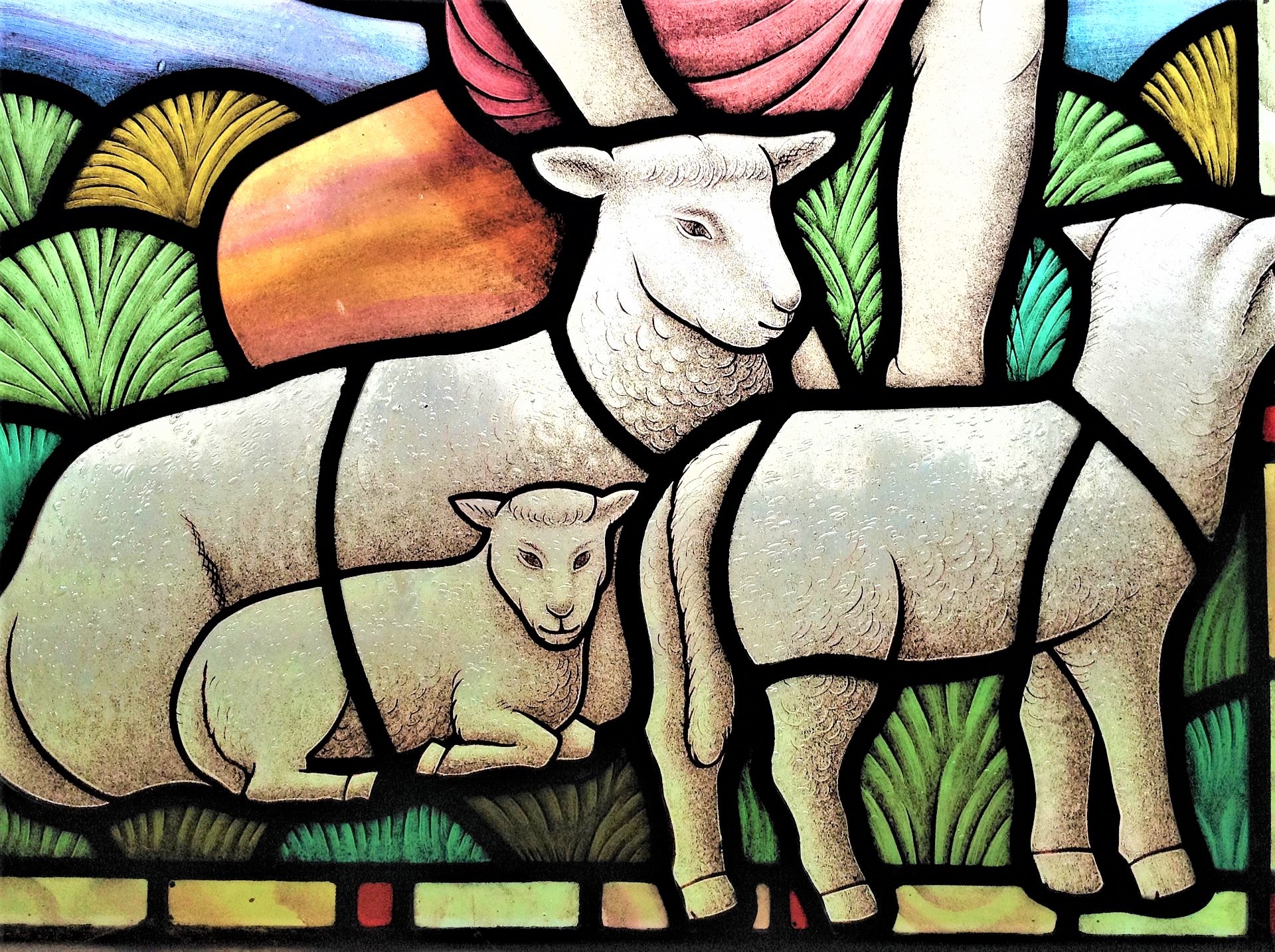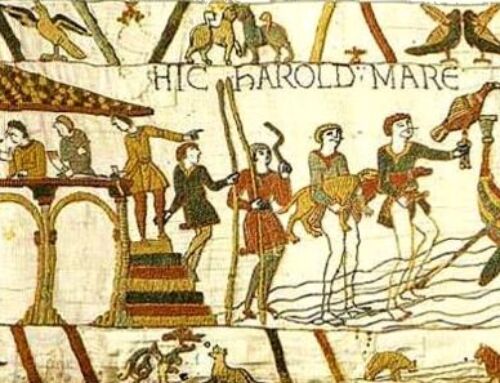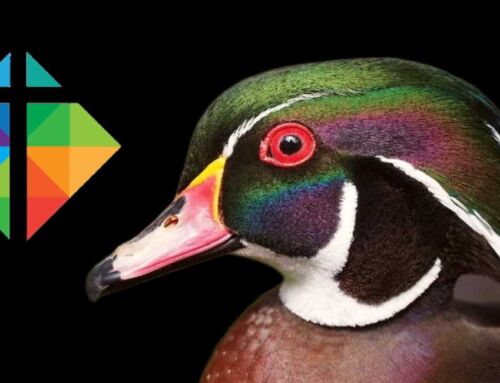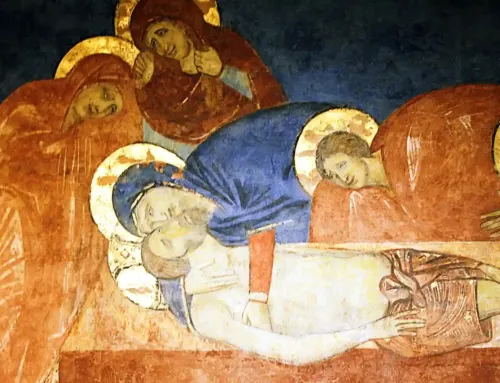Part 2: The Sheep
English choirmaster, John Rutter, established the Cambridge Singers in the early 1980s for the purpose of producing musical recordings. They have been amazingly prolific with nearly forty albums in their vast repertoire.
In The Lord is My Shepherd we hear a mixed choir of men’s and women’s voices intertwining effortlessly with the instrumentation. Throughout, they engage in a sort of “dialogue” with the lyrical movement of the Shepherd (signified by oboe and harp) as we laid out in Part 1.
The human voices represent the sheep, who are being led on a journey by the Shepherd through the Valley of Darkness and into the House of the Lord.
As in Part 1, it might be best to listen first to the piece while focusing on our subject – the journey of the sheep. To set the stage for your listening, I have divided the lyrics into verses and indicated how the voices interact with each other in a creative dance as they undertake their journey.
Following the performance, you can read my analysis of John Rutter’s wonderful expression of sheer musical beauty.
The lyrics and interplay of voices
Women:
The Lord is my shepherd: therefore can I lack nothing. He shall feed me in a green pasture: and lead me forth beside the waters of comfort.
Men:
He shall convert my soul: and bring me forth in the paths of righteousness,
Alternating:
For his Name’s sake; for his Name’s sake; for his Name’s sake.
Intertwined:
Yea, though I walk through the valley of the shadow of death, I will fear no evil: for thou art with me; thy rod and thy staff comfort me.
Octaves:
Thou shalt prepare a table before me against them that trouble me: thou hast anointed my head with oil, and my cup shall be full.
Unison:
But thy loving-kindness and mercy shall follow me all the days of my life:
Forte:
And I will dwell in the house of the Lord, in the house of the Lord, in the house of the Lord, forever, forever.
The performance (duration, 5:10)
The sheep
As noted in the previous post, the music seems to descend from on high beginning with the glissando of the harp. This descent is also played out in the sequence of voices: the lovely higher women’s voices sing the first verse and convey a sense of the sheep’s high-spirited confidence in their Shepherd.
These are followed by the lower men’s voices, emphasizing their desire to be led into “righteousness” by the Lord. The movement from high to low voices symbolizes the descent of both sheep and Shepherd into a valley.
In these opening verses, the men and women alternate in expressing their intention that everything they do might be for God’s glory (“for His Name’s sake”). The third time they sing this phrase, they do so in unison to express their common desire that His Name be glorified.
The valley
The unison voices serve a purpose: the daunting experience of entering into the Valley seems to bring them together. As they walk, guided by the Shepherd’s oboe, the men’s and women’s voices mirror each other: when the women’s voices rise, the men’s voices descend.
It is almost as if they are huddled closely together, walking arm-in-arm through a dangerous place, looking warily about. Then, they see the Shepherd’s “Rod and Staff” that give them courage! Thereafter, they keep their eyes firmly fixed on these, which give them comfort and confidence to continue the journey.
The sheep seem to reach the lowest point of the Valley at the word “evil”. Immediately after that, the sheep begin to rise and emerge from the Valley to escape their enemies. Notice the quasi-onomatopoetic effect of the word “trouble”, slightly but beautifully trilled (“against them that trrouble me”) which emphasizes – vocally – the trials of this vale of tears and our many earthly challenges.
From the word “trouble”, the movement is entirely ascending. The anointing of their heads with oil and the prospect of a banquet solicits the deepest desires of the sheep for the joys that lie ahead. They can now see that the end of their journey is near.
The joy of the Lord’s house
From the beginning of the last verse, “But thy loving kindness…,” the mixed voices build both in pitch and in intensity to the pinnacle of the poem’s emotion. It is the single moment in the piece where the music reaches a decisive fortissimo (highest and loudest point):
“And I shall dwell in the house of the Lord….”
After that peak moment, there is a period of denouement with oboe, harp, voice and strings gently carrying the listener into a place of peace and blessedness. The sheep have finally come to rest in safety in the Lord’s House and in the complete satisfaction of all their desires.
Rutter has give us the perfect artistic expression of what the theologians call the “beatific vision”.
The harp concludes with a lovely gentle arpeggio, and the voice of the Shepherd, so lyrically portrayed by the oboe throughout, is fittingly the last sound heard.

Soul Work
When you have time, return to this lovely piece of musical perfection and dwell on Rutter’s masterful interweaving of voice and instrument throughout.
Feel the anxiety of the sheep as they go through the Valley of Death (their entrance appropriately symbolized by the almost nervous expression, “Yea…”) and cling to your Shepherd as you walk with the sheep through the darkness and past your enemies.
Experience the exuberant hopefulness of the sheep as they begin to ascend to the place where the darkness clears and the doors of the House are thrown open to you by the Shepherd. Peer into the banquet hall:
Has all this been prepared for me?
Unite yourself spiritually to the Church of Christ (the Shepherd’s flock) as she journeys through the Dark Valley and then runs headlong into the eternal joy of the House of the Lord.
Then put all the many concerns of your life into the hands of the Good Shepherd and trust that He is leading you and your loved ones, one step at a time, through the darkness, into the Light.




Leave A Comment